
science
- rules discussion
I've seen a few complaints over the past few weeks about there being a lot of psuedoscience, and there has been a fair amount of reports.
I figured it would be a good idea to update the rules on the sidebar to clearly lay out what is and isn't allowed.
I think a tagging system might help to keep down on the spam and elevate real scientific sources. These are just a draft and more rules could be added in the future if they are needed.
Current draft (work in progress, add suggestions in comments): *** A community to post scientific articles, news, and civil discussion.
Submission Rules:
- All posts must be flagged with an appropriate tag and must be scientific in nature. All posts not following these guidelines will be removed.
- All posts must be peer reviewed and published in a reputable journal, unless flagged as news or discussion. No pseudoscience.
- No self-promotion, blogspam, videos, or memes. See list of unapproved sources below.
Comment Rules:
- Civility to other users, be kind.
- See rule #1.
- Please stay on the original topic in the post. New topics should be referred to a new post/discussion thread.
- See rule #1 again. Personal attacks, trolling, or aggression to other users will result in a ban.
- Report incivility, trolling, or otherwise bad actors. We are human so we only see what is reported.
Flag Options
- [Peer reviewed]
- [News]
- [Discussion]
List of potential predatory journals & publishers (do not post from these sources)
List of unapproved sources:
- Psypost
- Sciencealert
- (any other popsci site that uses titles generally regarded as clickbait)
***
Original draft:
A community to post scientific articles, news, and civil discussion.
Submission Rules:
- All posts must be flagged with an appropriate tag and must be scientific in nature. All posts not following these guidelines will be removed.
- All posts must be peer reviewed and published in a reputable journal, unless flagged as news or discussion. No pseudoscience.
- No self-promotion, blogspam, videos, or memes.
Comment Rules:
- Civility to other users, be kind.
- See rule #1.
- Please stay on the original topic in the post. New topics should be referred to a new post/discussion thread.
- See rule #1 again. Personal attacks, trolling, or aggression to other users will result in a ban.
- Report incivility, trolling, or otherwise bad actors. We are human so we only see what is reported.
Flag Options
- [Peer reviewed]
- [News]
- [Discussion]
List of potential predatory journals & publishers (do not post from these sources)
*** I'm not on 24/7 but I'll try to update these when I get a chance.
- When muscles work out, they help neurons to grow, a new study showsnews.mit.edu When muscles work out, they help neurons to grow, a new study shows
Exercise can have benefits at the level of neurons, through chemical and mechanical effects, MIT researchers find. The discovery could inform exercise-related therapies for repairing damaged and deteriorating nerves.
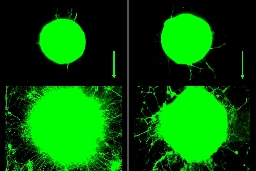
- Independence Missouri woman regains sight after first-of-its-kind surgery in Missouriwww.kctv5.com Independence woman regains sight after first-of-its-kind surgery in Missouri
Independence woman regains sight after first-of-its kind surgery in Missouri

INDEPENDENCE, Mo. (KCTV) - An Independence woman, who doctors told would be partially blind for the rest of her life, is regaining her vision due to a relatively new implant approved by the Food and Drug Administration (FDA).
- Plastic-eating insect discovered in Kenyaphys.org Plastic-eating insect discovered in Kenya
There's been an exciting new discovery in the fight against plastic pollution: mealworm larvae that are capable of consuming polystyrene. They join the ranks of a small group of insects that have been found to be capable of breaking the polluting plastic down, though this is the first time that an i...

- Air pollution exposure and head and neck cancer incidencedoi.org Air pollution exposure and head and neck cancer incidence - Scientific Reports
To investigate air pollution’s effect in the form of PM2.5 (particulate matter measuring less than 2.5 microns) on head and neck aerodigestive cancer incidence, an epidemiological cohort analysis was performed using data from the Surveillance Epidemiology and End Results national cancer database fro...
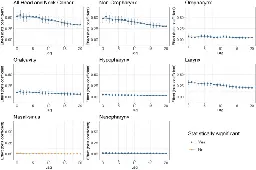
> Abstract > > To investigate air pollution’s effect in the form of PM2.5 (particulate matter measuring less than 2.5 microns) on head and neck aerodigestive cancer incidence, an epidemiological cohort analysis was performed using data from the Surveillance Epidemiology and End Results national cancer database from the years 2002–2012. The relationship between US county mean PM2.5 levels and head and neck cancer (HNC) incidence rates were examined using a linear mixed model. Lagged effect of the pollutant’s effect on HNC incidence was analyzed. Our results showed a significant association between the incidence of HNC and certain subtypes with PM2.5 exposure after controlling for demographic characteristics, smoking and alcohol use. We observed the highest association at a 5-year lag period (β = 0.24, p value < 0.001). We observed significant associations at no lag (β = 0.16, p value = 0.02) and up to a 20-year lag period (β = 0.15, p value < 0.001). PM2.5 exposure is associated with an increased incidence of HNC, with the strongest association at a 5-year lag period. To better understand the relationships between exposure and cancer pathogenesis, further subgroup analysis is needed.
- Plants Really Do 'Scream'. We've Simply Never Heard Them Until Nowwww.sciencealert.com Plants Really Do 'Scream'. We've Simply Never Heard Them Until Now.
It seems like Roald Dahl may have been onto something after all: if you hurt a plant, it screams.

- AI protein-prediction tool AlphaFold3 is now open sourcewww.nature.com AI protein-prediction tool AlphaFold3 is now open source
The code underlying the Nobel-prize-winning tool for modelling protein structures can now be downloaded by academics.

> AlphaFold3 is open at last. Six months after Google DeepMind controversially withheld code from a paper describing the protein-structure prediction model, scientists can now download the software code and use the artificial intelligence (AI) tool for non-commercial applications, the London-based company announced on 11 November.
When AlphaFold3 was first published the code wasn't publicly available (which is pretty bad for computational research), so this is good news that they finally released the code repository.
The GitHub repository: https://github.com/google-deepmind/alphafold3
Note that to request access one needs to sign a form & has to represent a non-commercial entity. If you receive access then allegedly you can easily run AlphaFold3 via
docker - An evaluation of online information acquisition in US news desertsdoi.org An evaluation of online information acquisition in US news deserts - Scientific Reports
A growing concern is that as local newspapers disappear, communities lose trusted gatekeepers and develop information voids, creating openings for misinformation to thrive. Previous work has not evaluated whether residents of news deserts have developed different information acquisition habits. We f...
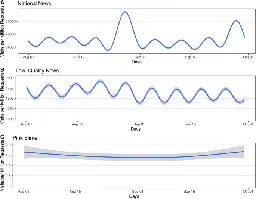
> Abstract > > A growing concern is that as local newspapers disappear, communities lose trusted gatekeepers and develop information voids, creating openings for misinformation to thrive. Previous work has not evaluated whether residents of news deserts have developed different information acquisition habits. We fill this gap by directly comparing information consumption and referral patterns inside and outside of news deserts in a novel dataset of engagement with online media by millions of users on the Edge browser. We find little evidence that those in news deserts consume more low-quality sites or are more likely to be referred to low-quality sites from search engines or social media. We find some evidence that those in news deserts do consume more national news than locations with local media outlets. These results contribute to our understanding of how the loss of local newspapers has impacted online information acquisition.
- Music communicates social emotions: Evidence from 750 music excerptsdoi.org Music communicates social emotions: Evidence from 750 music excerpts - Scientific Reports
Humans perceive a range of basic emotional connotations from music, such as joy, sadness, and fear, which can be decoded from structural characteristics of music, such as rhythm, harmony, and timbre. However, despite theory and evidence that music has multiple social functions, little research has e...
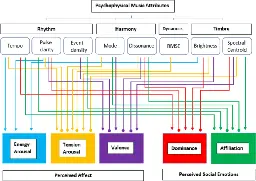
> Abstract > > Humans perceive a range of basic emotional connotations from music, such as joy, sadness, and fear, which can be decoded from structural characteristics of music, such as rhythm, harmony, and timbre. However, despite theory and evidence that music has multiple social functions, little research has examined whether music conveys emotions specifically associated with social status and social connection. This investigation aimed to determine whether the social emotions of dominance and affiliation are perceived in music and whether structural features of music predict social emotions, just as they predict basic emotions. Participants (N = 1513) listened to subsets of 750 music excerpts and provided ratings of energy arousal, tension arousal, valence, dominance, and affiliation. Ratings were modelled based on ten structural features of music. Dominance and affiliation were readily perceived in music and predicted by structural features including rhythm, harmony, dynamics, and timbre. In turn, energy arousal, tension arousal and valence were also predicted by musical structure. We discuss the results in view of current models of music and emotion and propose research to illuminate the significance of social emotions in music.
- Neuronal Development: Rethinking sensorimotor circuitsdoi.org Neuronal Development: Rethinking sensorimotor circuits
New research shows that the neural circuit responsible for stabilising gaze can develop in the absence of motor neurons, contrary to a long-standing model in the field.

- This scientist treated her own cancer with viruses she grew in the labwww.nature.com This scientist treated her own cancer with viruses she grew in the lab
Virologist Beata Halassy says self-treatment worked and was a positive experience — but researchers warn that it is not something others should try.
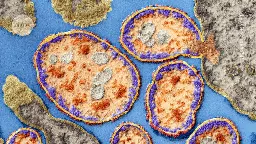
- Bipolar disorder: how lithium as a treatment fell out of favourwww.theguardian.com Bipolar disorder: how lithium as a treatment fell out of favour
As UK diagnoses have doubled, prescriptions of the treatment have halved. While experts feud over its use, many patients feel it is an effective way of managing their condition

Occupational stress is a trigger for Rebecca Wilde, a 32-year-old tech worker in Buckinghamshire. Four years ago, work pressures combined with family issues affected her sleep, leading to a severe manic episode. She was hospitalised for a month and a half, and diagnosed with type 1 bipolar disorder, also known as bipolar 1, a mood condition that can have devastating consequences if not managed well. Mania, and sometimes psychosis, is present in type 1.
Wilde was experiencing both: at one point, she thought she could talk to dogs. She was put on the antipsychotic drug olanzapine and another mood stabiliser, lithium. She has now been taking lithium alone for a year, and it has been transformative. “On the lithium, I definitely feel like me,” she says.
While Wilde was transitioning to lithium only, researchers were furiously debating the evidence around the drug. In 2023, the journal Bipolar Disorders published an editorial co-written by editor-in-chief Gin S Malhi, titled “Lithium first: not merely first line”. This asserted that lithium should be considered not only as one of several possible initial treatments for bipolar disorder, but as the first and foremost of these. Lithium “needs to be championed”, maintains Malhi, a visiting psychiatry professor at Oxford University.
This is not the only heated dispute among lithium researchers from the past couple of years. A 2024 critique led to professors trading words such as “pseudoscience” and “extraordinarily venomous”. Feuds such as these point to the high stakes over the declining popularity of lithium.
Medicinal lithium is remarkable. There is more evidence of lithium’s effectiveness in managing bipolar disorder than for any other medicine. As a naturally occurring ion, lithium can’t be patented. And unlike most medicines, it’s not metabolised by the body.
Malhi explains why this is significant: “With lithium, the body can be thought of simply as a bucket of water with input and output of fluid. Then, whatever lithium you add gives you a plasma level. It means we can accurately make changes with sensitivity around plasma levels and clinical response and tolerability.”
- Japanese monkeys rapidly noticed snake-scale cladded salamanders, similar to detecting snakeswww.nature.com Japanese monkeys rapidly noticed snake-scale cladded salamanders, similar to detecting snakes - Scientific Reports
The ability to detect threats quickly is crucial for survival. Primates, including humans, have been shown to identify snakes quickly and accurately due to their evolutionary history. However, it is unclear which visual features humans and primates detect as threat targets. Several studies have sugg...

> Abstract > > The ability to detect threats quickly is crucial for survival. Primates, including humans, have been shown to identify snakes quickly and accurately due to their evolutionary history. However, it is unclear which visual features humans and primates detect as threat targets. Several studies have suggested that snake scales possess potent visual features. My previous study demonstrated that removing snake scales through digital image processing reduces attention directed toward snakes. Here, I conducted a visual search task using luminance- and contrast-adjusted photographs of snakes and salamanders in monkeys that had never seen these real reptiles and amphibians. This study demonstrates that the presence or absence of snake scales is responsible for the rapid detection of target animals. The monkeys quickly detected one snake photograph from the eight salamander photographs than vice versa. However, when the same salamanders were clothed with snake scales using image processing, the difference in detection speed between snakes and salamanders disappeared. These results are consistent with the snake-detection theory that snakes were a strong selective pressure favoring modifications in the primate visual system that allow them to detect snakes more quickly or reliably. This strongly suggests that primates’ snake detection depends on the snake-scale shapes, which are both snake-specific and common to all snakes.
- Comparison of economic burden of disease and quality of life in patients with premature ejaculation and erectile dysfunctionwww.nature.com Comparison of economic burden of disease and quality of life in patients with premature ejaculation and erectile dysfunction - Scientific Reports
To compare the economic burden of disease and quality of life in patients with premature ejaculation (PE) and erectile dysfunction (ED). A convenience sampling method was used, and self-designed general information questionnaire, disease economic burden questionnaire, and SF-12 quality of life quest...
> Abstract > > To compare the economic burden of disease and quality of life in patients with premature ejaculation (PE) and erectile dysfunction (ED). A convenience sampling method was used, and self-designed general information questionnaire, disease economic burden questionnaire, and SF-12 quality of life questionnaire were used to investigate 494 patients with ED and 285 patients with PE who attended a tertiary hospital in Taiyuan City from October 2021 to May 2023, and the relevant data were analysed using SPSS26.0 statistical software. The direct, indirect, intangible, and total economic burdens of the two groups were compared, and the differences were statistically significant (P < 0.05), and the direct, indirect, intangible, and total economic burdens of ED patients were higher than those of PE patients; the scores of the two groups in the dimensions of PF (physical function), RP (role physical), RE (role emotion), and MH (mental health) as well as in the MCS (mental component score), and overall quality of life scores, the differences were statistically significant (P < 0.05), with ED patients having lower quality of life scores than PE patients. Compared with PE patients, ED patients have a heavier economic burden of disease and lower quality of life, suggesting that the government and relevant departments of society should pay attention to the economic burden of disease and quality of life of ED patients and take appropriate measures to improve them.
- Why do wet dogs shake themselves dry? Neuroscience [finally] has an answerwww.nature.com Why do wet dogs shake themselves dry? Neuroscience has an answer
Deciphering how mammals respond to sensations through their fur could inspire further research on skin sensitivity.

> When a dog shakes water off its fur, the action is not just a random flurry of movements — nor a deliberate effort to drench anyone standing nearby.
> This instinctive reflex is shared by many furry mammals including mice, cats, squirrels, lions, tigers and bears. The move helps animals to remove water, insects or other irritants from hard-to-reach places. But underlying the shakes is a complex — and previously mysterious — neurological mechanism.
> Now, researchers have identified the neural circuit that triggers characteristic ‘wet dog’ shaking behaviour in mice — which involves a specific class of touch receptors, and neurons that connect the spinal cord to the brain. Their findings were published in Science on 7 November.
> “The touch system is so complex and rich that [it] can distinguish a water droplet from a crawling insect from the gentle touch of a loved one,” says Kara Marshall, a neuroscientist at Baylor College of Medicine in Houston, Texas. “It’s really remarkable to be able to link a very specific subset of touch receptors to this familiar and understandable behaviour.”
Research article was featured on the cover of this issue of Science, with a glorious picture of a brown bear doing the "wet dog shake" (https://www.science.org/toc/science/current)
Research article: https://doi.org/10.1126/science.adq8834
Please let me know if there is paywall
- Ancient unicellular organism indicates embryonic development might have existed prior to animals' evolutionphys.org Ancient unicellular organism indicates embryonic development might have existed prior to animals' evolution
Chromosphaera perkinsii is a single-celled species discovered in 2017 in marine sediments around Hawaii. The first signs of its presence on Earth have been dated at over a billion years, well before the appearance of the first animals.

- Conservatives are happier, but liberals lead more psychologically rich lives, research findswww.psypost.org Conservatives are happier, but liberals lead more psychologically rich lives, research finds
New research shows conservative beliefs are linked to happiness and life meaning, while liberal beliefs align more with psychological richness, suggesting that political views shape different paths to personal well-being.

- Scientists glue two proteins together, driving cancer cells to self-destructmed.stanford.edu Scientists glue two proteins together, driving cancer cells to self-destruct
Stanford researchers hope new technique will flip lymphoma protein’s normal action — from preventing cell death to triggering it.
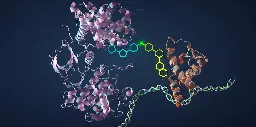
- In a First, Scientists Found Structural, Brain-Wide Changes During Menstruationwww.sciencealert.com In a First, Scientists Found Structural, Brain-Wide Changes During Menstruation
The constant ebb and flow of hormones that guide the menstrual cycle don't just affect reproductive anatomy.

- Chemists just broke a 100-year-old rule and say it's time to rewrite the textbooksphys.org Chemists just broke a 100-year-old rule and say it's time to rewrite the textbooks
UCLA chemists have found a big problem with a fundamental rule of organic chemistry that has been around for 100 years—it's just not true. And they say, It's time to rewrite the textbooks.

- Ticker-tape synaesthesia – when real life comes with subtitleswww.theguardian.com Ticker-tape synaesthesia – when real life comes with subtitles
A rare variation of the phenomenon in which people’s senses are intermingled involves the mind’s eye seeing speech in captions. Scientists believe the condition arises from excessive neural connectivity and stimulation

- Paid to Peer-Review: Physicians Reviewing Top Medical Journals Receive Billions from Pharmaceuticalsreformpharmanow.substack.com Paid to Peer-Review: Physicians Reviewing Top Medical Journals Receive Billions from Big Pharma
More than half of physicians who peer-reviewed major medical journals received payments from pharmaceutical companies and the medical device industry.

- The autism spectrum diagnosis rate has increased by 175%, from 2.3 per 1000 in 2011 to 6.3 per 1000 in 2022.jamanetwork.com Autism Diagnosis Among US Children and Adults, 2011-2022
This cross-sectional study examines relative increases in autism diagnosis rates in US health and insurance claims records from 2011 to 2022 by age, gender, race, and ethnicity.
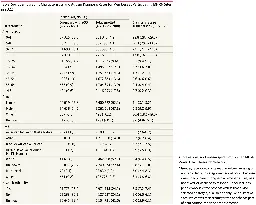
- Hurricane-Related Deaths Keep Happening Long After a Storm Endsinsideclimatenews.org Hurricane-Related Deaths Keep Happening Long After a Storm Ends - Inside Climate News
Indirect fatalities from tropical cyclones can persist up to 15 years after a catastrophic weather event, according to a new study.

- Playing in mud and dirt can boost your child’s immune system – here’s howtheconversation.com Playing in mud and dirt can boost your child’s immune system – here’s how
It’s essential to embrace nature – dirt and all.

- Math Is Still Catching Up to the Mysterious Genius of Srinivasa Ramanujan
Math Is Still Catching Up to the Mysterious Genius of Srinivasa Ramanujan
https://www.quantamagazine.org/srinivasa-ramanujan-was-a-genius-math-is-still-catching-up-20241021/
Born poor in colonial India and dead at 32, Ramanujan had fantastical, out-of-nowhere visions that continue to shape the field today
- Is autism a factor in conspiracy mentality? New study says nowww.psypost.org Is autism a factor in conspiracy mentality? New study says no
A new study published in Cognitive Neuropsychiatry has found no connection between autism and a general tendency to believe in conspiracies.

>In their analysis, the researchers found no significant differences in conspiracy mentality between the autistic group and the general population. Both groups scored similarly, indicating that being autistic does not inherently affect one’s general susceptibility to conspiracy beliefs.
>This finding suggests that conspiracy mentality is not linked with autism, contradicting two potential hypotheses the researchers explored: one that autism might increase susceptibility to conspiracy beliefs due to common experiences of social exclusion, and another that autism might offer a type of protection against these beliefs due to cognitive characteristics associated with autism, such as analytical thinking.
Link to the study:
https://www.tandfonline.com/doi/full/10.1080/13546805.2024.2399505#abstract
- Studying Wikipedia browsing habits to learn how people learn | Penn Todaypenntoday.upenn.edu Studying Wikipedia browsing habits to learn how people learn | Penn Today
A collaborative team of researchers analyzed the information-seeking styles of more than 480,000 people from 50 countries and found that gender and education inequality track different types of knowledge exploration. Their findings suggest potential cultural drivers of curiosity and learning.

- The Weak Science Behind Psychedelicswww.theatlantic.com The Weak Science Behind Psychedelics
If vulnerable patients are going to take powerful hallucinogens, they deserve better evidence.

No psychiatric treatment has attracted quite as much cash and hype as psychedelics have in the past decade. Articles about the drugs’ surprising results—including large improvements on depression scores and inducing smokers to quit after just a few doses—earned positive coverage from countless journalists (present company included). Organizations researching psychedelics raised millions of dollars, and clinicians promoted their potential to be a “new paradigm” in mental-health care. Michael Pollan’s 2018 psychedelics book, How to Change Your Mind, became a best seller and a Netflix documentary. Psychedelics were made out to be a safe solution for society’s most challenging mental-health problems.
But the bubble has started to burst: It’s been a bad year for fans of psychedelics.
A few months ago, two articles appeared, one in The New York Times and another in Business Insider, that portrayed major figures in psychedelics research as evangelists whose enthusiasm for the drugs compromised the integrity of their findings. In August, the FDA rejected the first application for therapy assisted by MDMA, the drug commonly known as ecstasy, saying that it “could not be approved based on data submitted to date,” according to the company that brought the application, Lykos. And five people, including two doctors, were recently charged in the death of the Friends actor Matthew Perry, who was found unconscious in his pool after he took large doses of the psychedelic ketamine. (Three of the five have reached plea agreements; the other two pleaded not guilty.)
These incidents, though unrelated, point to a problem for psychedelic research: Many of the studies underpinning these substances’ healing powers are weak, marred by a true-believer mentality among its researchers and an underreporting of adverse side effects, which threatens to undermine an otherwise bright frontier in mental-health treatment.
Read: Psychedelics open your brain. You might not like what falls in.
Psychedelics are by nature challenging to research because most of them are illegal, and because blinding subjects as to whether they’ve taken the drug itself or a placebo is difficult. (Sugar pills generally do not make you hallucinate.) For years, scientific funding in the space was minimal, and many foundational psychedelic studies have sample sizes of just a few dozen participants.
The field also draws eccentric types who, rather than conducting research with clinical disinterest, tend to want psychedelics to be accepted by society. “There’s been really this cultlike utopian vision that’s been driving things,” Matthew W. Johnson, himself a prominent psychedelic researcher at Sheppard Pratt, a mental-health hospital in Baltimore, told me.
Johnson, who has published many studies on psilocybin, the active compound in magic mushrooms, recently left his lab at Johns Hopkins after a dispute with Roland Griffiths, a senior researcher with whom he worked closely. Griffiths, who died last year, said in talks that psychedelics might be “critical to the survival of the human species.” He also behaved like a “spiritual leader,” according to a complaint by Johnson obtained by The New York Times, ran “his psychedelic studies more like a ‘new-age’ retreat center,” and recommended spiritual literature and meditation classes to study participants. Johnson argued that Griffiths’s emphasis on the metaphysical risked steering study participants toward his desired outcomes.
Albert Garcia-Romeu, the current associate director of the Hopkins psychedelics lab, disputes this description of Griffiths and the lab in general. “I never saw him behave like a ‘spiritual leader,’ or running the lab like a ‘new-age retreat center,’ whatever that means,” Garcia-Romeu told me. He noted that researchers have long used psychedelics to explore spiritual experiences but that “there was no imposition of any particular beliefs going on.”
Still, Griffiths isn’t the only one who zealously promoted psychedelics. Take Rick Doblin, the founder of an organization called the Multidisciplinary Association for Psychedelic Studies, or MAPS. He, too, is prone to grandiose thinking, saying he believed psychedelics could be “an antidote to evil” or might lead to a more “spiritualized humanity.” Doblin also encouraged marijuana use at work, arguing that there are “smokable tasks,” which some people “do better while under the influence of marijuana, such as working on complicated spreadsheets.” (Betty Aldworth, the director of education at MAPS, told me that Doblin was “adamant about the science being valid and proving out the answers to these questions through clinical trials.” Doblin did not reply to a request for comment.)
Neşe Devenot, a Johns Hopkins writing instructor and a former MAPS volunteer, told me that many people in the psychedelics field let their political and spiritual beliefs “influenc[e] the type of data that is being collected. The researchers should have more clinical equipoise and not be so assured of what works.”
Inside Lykos, a MAPS spinoff, many staffers were sold on the presumed benefits of MDMA, according to Stat News. One trial participant said her Lykos therapists told her she was “helping make history” and was “part of a movement.” The company failed to collect data on some of the side effects of MDMA, such as euphoria, that might have revealed the drug’s potential for abuse, Stat reported. (In a statement to Stat News, the company stood by its studies, saying that they were conducted with appropriate checks and balances and that the company did add data on positive side effects to some protocols.)
Last month, The Wall Street Journal reported that several participants in the Lykos studies said they felt pressured to report only good outcomes. Three of them said that their thoughts of suicide worsened after they took the MDMA, but that these deteriorations weren’t captured by the study results. (In response to the Journal, Lykos said it reported any significant increases in suicidality to the FDA.)
The FDA is reportedly now looking into Lykos’s data, and the journal Psychopharmacology retracted three papers stemming from MAPS’ early MDMA trials because of “protocol violations amounting to unethical conduct.” (MAPS’ Aldworth says the studies should have been revised instead of retracted. Lykos did not respond to a request for comment.)
The underreporting of adverse events and overhyping of tepid data appear to be widespread in psychedelic research. One review concluded that in many studies of psychedelics, adverse events “were not systematically assessed” and are therefore probably underreported.
And although esketamine (a ketamine-like nasal spray) was approved by the FDA in 2019, one 2021 review noted that there is “a paucity of data concerning long-term safety” of ketamine and esketamine, and a 2023 review found that esketamine’s negative side effects have been systematically underreported in journal articles. Some researchers overstate ketamine’s benefits and underplay its risks, according to a recent review article.
Many people taking ketamine for mental-health issues use the drug repeatedly for weeks or months, but little long-term safety data on the drug exist, says Boris Heifets, an anesthesiology and psychiatry professor at Stanford. For some, the drug’s dissociative effects can become addictive—Matthew Perry was injecting the drug six to eight times a day, prosecutors said, and he spent $55,000 on it in the month before he died. “You’re giving a drug that most definitely has abuse potential, and you’re giving it out online, without supervision, to anybody who can convince you they’re depressed,” Heifets told me. “It’s honestly a little fucked up.”
Read: A new chapter in the science of psychedelic microdosing
In a recent study conducted by Heifets, surgeons administered ketamine or a saline placebo to patients who were undergoing surgical anesthesia. Unlike patients in many psychedelic studies, these were truly blinded: They were unconscious, so those who got ketamine didn’t have a ketamine trip. It turned out that about half of both groups, ketamine and placebo, felt less depressed afterward. And those who felt less depressed assumed they had gotten ketamine.
In other words, ketamine did work, a little. But so did the placebo. Heifets attributes this effect to the extensive care and attention that all the study participants received before the procedure. The researchers told them that their mental health is important, and listened to them talk about their problems—in some cases, for hours. They told them that ketamine might make them feel better. To Heifets, this shows that rather than jumping to ketamine, doctors would do well to connect depressed people with caring, attentive therapists as a first step. (But “good luck finding one,” he acknowledged.)
These scientific shortcomings don’t seem to be dampening the enthusiasm about psychedelics. Hundreds of ketamine clinics across the country purport to treat conditions as varied as anxiety and chronic pain, and online services will send ketamine to people’s homes. An initiative to legalize psychedelics will be on the ballot in Massachusetts in November. Veterans’ groups and others are clamoring for the legalization of psychedelic therapies. This is understandable, because these drugs do show promise, especially for treating depression, PTSD, and certain types of addiction. The alternatives—bouncing between SSRIs or scrambling to find an in-network therapist—are bleak, and they fail plenty of desperate people. No new PTSD treatments have been approved in two decades. Some people truly have been cured of their ailments with short, monitored courses of psychedelics.
But the intense interest in psychedelics makes it only more important that the science behind them is as rigorous as possible, untainted by the personal views of researchers. Suggesting that people should get off proven medications in order to try MDMA or psilocybin is dangerous unless those drugs are backed by airtight evidence. And when dealing with psychologically vulnerable people, researchers would do well to align expectations with the reality of what psychedelics can actually accomplish.
- Anyone Can Learn Echolocation in Just 10 Weeks—And It Remodels Your Brainwww.scientificamerican.com Anyone Can Learn Echolocation in Just 10 Weeks—And It Remodels Your Brain
Human echolocation repurposes parts of the brain’s visual cortex for sound, even in sighted people

Act now and you too can see as well as a bat!
- According to the Medical Journal of Iran, 57% of trans people have Narcissistic Personality Disorderpmc.ncbi.nlm.nih.gov The frequency of personality disorders in patients with gender identity disorder
Background: Co-morbid psychiatric disorders affect prognosis, psychosocial adjustment and post-surgery satisfaction in patients with gender identity disorder. In this paper, we assessed the frequency of personality disorders in Iranian GID patients. ...

WTF Iran???
- Long-Overlooked Painting Reveals Genius of a Forgotten Black Polymathnews.artnet.com Long-Overlooked Painting Reveals Genius of a Forgotten Black Polymath
Long considered a satirical painting, new research shows Francis Williams was celebrating recording the arrival of Halley's comet in 1759.

- ‘Poo milkshake’ boosts the microbiome of c-section babieswww.nature.com ‘Poo milkshake’ boosts the microbiome of c-section babies
Giving faecal transplants to children born by caesarian section is promising, early clinical trial results show.

> Feeding a baby born by caesarean section milk containing a tiny bit of their mother’s poo introduces beneficial microbes to their gut, according to a clinical trial. The approach might one day help to prevent diseases during childhood and later in life.
> Some studies show that babies born by c-section, rather than vaginal birth, have a higher risk of asthma, inflammation of the digestive system and other diseases associated with a dysfunctional immune system... Experiments have attempted to compensate for that by swabbing babies born by c-section with microbes from their mother’s vagina or giving them these microbes orally, a practice known as ‘vaginal seeding’. But this technique has had limited success, because vaginal microbes, scientists have learnt, cannot effectively colonize infants’ guts...
> Helve and his colleagues have been pioneers in testing whether faecal transplants can instead improve the health of a baby’s microbiome. In their latest trial, which recruited women scheduled for a c-section at the Helsinki University Hospital, the researchers mixed a fluid containing 3.5 milligrams of a mother’s poo into milk and gave the concoction to the corresponding baby. They did this for 15 babies during their first feed. Another 16 babies received a placebo.
> An important next step in the field, Shao says, would be to pinpoint the specific maternal gut microbes that are most likely to transmit to and colonize their babies’ guts. Shao asks: “If these species do exist across human populations, wouldn’t it be more effective and safer” to give newborns a laboratory-made transplant that’s guaranteed to be pathogen-free?
"This is the shit"
But seriously don't try this at home. Fecal matters can contain pathogens, in fact 54 of the 90 women screened were excluded because of detected pathogens. If this goes well maybe ppl can make some type of lab-made probiotics for C-section babies or stuff
The abstract presented at IDWeek 2024: https://idweek2024.eventscribe.net/index.asp?presTarget=2886841
- New species of tardigrade reveals secrets of radiation-resisting powerswww.nature.com New species of tardigrade reveals secrets of radiation-resisting powers
Knowing the genes responsible for water bears’ radiation tolerance could lead to diverse applications, from cancer treatment to space exploration.

> A newly described species of tardigrade is giving scientists insights into what makes these tiny eight-legged creatures so resistant to radiation.
> Now, scientists have sequenced the genome of a species new to science, and revealed some of the molecular mechanisms that give tardigrades their extraordinary resilience. Their study, published in Science on 24 October, identifies thousands of tardigrade genes that become more active when exposed to radiation. These processes point to a sophisticated defence system that involves protecting DNA from the damage that radiation causes and repairing any breaks that do occur.
> The authors hope that their insights could be harnessed to help protect astronauts from radiation during space missions, clean up nuclear pollution or improve cancer treatment.
"Radiation and multi-omics sequencing go brrrr"
Original paper on Science: https://doi.org/10.1126/science.adl0799
- A Physicist Reveals Why You Should Run in The Rainwww.sciencealert.com A Physicist Reveals Why You Should Run in The Rain
We've all been there – caught outside without an umbrella as the sky opens up.

>We've all been there – caught outside without an umbrella as the sky opens up. Whether it's a light drizzle or a heavy downpour, instinct tells us that running will minimise how wet we get. But is that really true? Let's take a scientific look at this common dilemma.
> You're out and about, and it starts to rain – and naturally you've forgotten your umbrella. Instinctively, you lean forward and quicken your pace. We all tend to believe that moving faster means we'll spend less time getting wet, even if it means getting hit with more rain as we move forward.
> But is this instinct actually correct? Can we build a simple model to find out if speeding up really reduces how wet we'll get? More specifically, does the amount of water that hits you depend on your speed? And is there an ideal speed that minimises the total water you encounter on your way from point A to point B?


